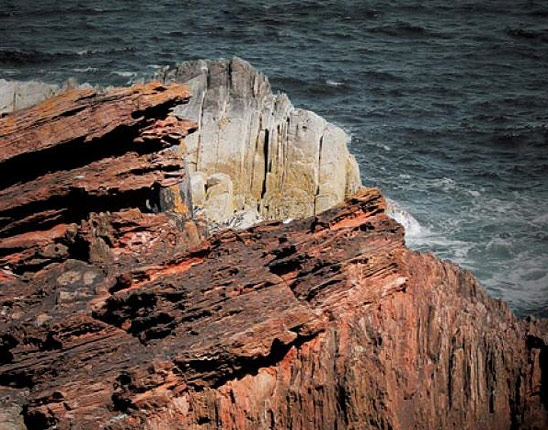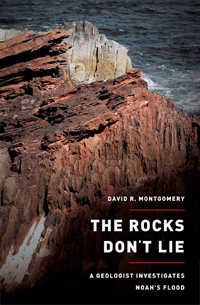In this week’s eSkeptic:
Don’t Miss Best-Selling Author JARED DIAMOND January 5th

The World Until Yesterday:
What Can We Learn from Traditional Societies?
SATURDAY, Jan. 5, 2013 at 2 pm
Beckman Auditorium
Mega-bestselling author of Guns, Germs, and Steel and Collapse, Dr. Jared Diamond surveys the differences between “traditional” societies and industrial or post-industrial societies, with an eye to the question: what can we learn from the former that can make the world we live in a better place for all of us? Today, citizens of industrial states take for granted metal, writing, airplanes, police and government, overweight people, meeting strangers without fear, heterogeneous populations, and so on. But all those features of modern human societies are relatively new in human history.…
CALTECH LECTURE SERIES FLYER CORRECTION
In the flyer that went out in the mail announcing our Fall 2012 lecture series events at Caltech, this Jared Diamond lecture mistakenly read Sunday January 5. It should have read SATURDAY, January 5.
Followed by…
DR. W. PATRICK MCCRAY
Sunday, January 20, 2013 at 2 pm
Baxter Hall
In 1969, Princeton physicist Gerard O’Neill began looking outward to space colonies as the new frontier for humanity’s expansion. A decade later, Eric Drexler, an MIT-trained engineer, turned his attention to the molecular world as the place where society’s future needs could be met using self-replicating nanoscale machines…
New Admission Policy and Prices
Please note there are important policy and pricing changes for this season of lectures at Caltech. Please review these changes now.

SCIENTIFIC AMERICAN COLUMN ON MICHAELSHERMER.COM
Logic-Tight Compartments
If you have ever pondered how intelligent and educated people can, in the face of overwhelming contradictory evidence, believe that that evolution is a myth, that global warming is a hoax, that vaccines cause autism and asthma, that 9/11 was orchestrated by the Bush administration, conjecture no more. The explanation is in what Michael Shermer calls logic-tight compartments—modules in the brain analogous to watertight compartments in a ship. In Michael Shermer’s January 2013 ‘Skeptic’ column for Scientific American, he discusses how our modular brains lead us to deny
and distort evidence.


2012—The Year in Monsters
To wind up 2012, MonsterTalk welcomes back Sharon Hill, founder of the Doubtful News website, to talk us through a year’s worth of monstrous topics.
About this week’s eSkeptic
In this week’s eSkeptic, Donald Prothero reviews The Rocks Don’t Lie: A Geologist Investigates Noah’s Flood, by David R. Montgomery. Read Prothero’s full bio.
A Gentle Journey
Through the Truth in Rocks
by Donald R. Prothero
Creationists are notorious for distorting or denying the facts of biology (evolution), paleontology (denying the evidence of evolution in fossils), physics and astronomy (denying modern cosmology), and many other fields. But some of their most egregious attempts to twist reality to fit their bizarre views are found in “flood geology,” a concoction of strange ideas about the geologic record that clearly demonstrate how little actual experience any of them has in looking at real rocks. I dissected this issue in great detail in Chapter 3 of my 2007 book, Evolution: What the Fossils Say and Why it Matters (Columbia University Press, New York).
David Montgomery, however, devotes an entire book to the topic of geology and creationism. The title is tantalizing, making one wonder whether this is yet another creationist book disguised as real science. But the content is relatively straightforward. Montgomery is a well-respected geomorphologist at the University of Washington who has studied landforms around the world, and he makes it clear up front that he is not about to support the ridiculous ideas of flood geology. Instead, he embarks on a long narration that is part travelogue, part history, and part description of the breakthroughs in biblical scholarship that long ago led to the rejection of biblical literalism by anyone who can actually read it in the original.
His first chapter looks at a number of places on earth where he has done research on Ice Age glacial dams and floods, and reveals that they show no evidence of being part of a global flood. In Chapter 2, he recounts the evidence of Grand Canyon with the creationist’s Grand Canyon: A Different View in his hands as he hikes, and remarks (p. 16) simply that “the story was nothing like the tale I read in the rocks I had spent the day hiking past.” Unfortunately, he does not provide enough detail (or illustrations of key outcrops) to really debunk the interpretations of “flood geologists.”
The next two chapters then recount the early history of geology, from the Greeks and Romans, to the Middle Ages, when scholars and natural historians tried to shoehorn all of earth history into the narrow accounts of Genesis, and finally were forced to reject the idea of Noah’s Flood by about 1840—all without losing their Christian faith. At the end he remarks (p. 91), “After Cuvier, the drive to find evidence of Noah’s Flood in the rocks was well and truly dead, although modern creationists would later resurrect the idea.” The next chapter then carries the historical narrative through the birth of modern geology, with Hutton, Buckland, and Lyell, and the eventual realization that the earth is immensely old with (in Hutton’s words) “no vestige of a beginning.”
Chapter 8 then jumps to another topic altogether: the discovery by George Smith and the others of ancient Sumerian and Babylonian flood myths that were directly plagiarized by the authors of Genesis. In Chapter 9, Montgomery looks at flood myths in cultures all over the world, and shows that there is no evidence they are describing a single universal flood of Noah. Chapter 10 then goes through the history of modern American creationism, from the Kentucky “Creation Museum” to the birth of fundamentalism, to George Macready Price and his amateurish efforts to create a new “flood geology” in the 1920s through the 1950s. Throughout this account, Montgomery points out how far from reality Price’s imaginary geology was, and how it was fought by genuine Christian geologists like J. Laurence Kulp, who attempted to reconcile Genesis and geology without violating the laws of earth science. Kulp’s efforts were eventually overshadowed by the later backlash into extreme fundamentalism, and marked the end of any attempt at scientific rationality trumping literalism in the creationist community.
Chapter 12 shifts to the story of J Harlen Bretz and the “Scablands floods,” and how this and other Ice Age glacial-dam floods bear no resemblance to Noah’s Flood (despite creationist attempts to hijack this discovery to their advantage). Then in Chapter 13, Montgomery describes the modern incarnation of “flood geology” proposed by Whitcomb and Morris in the 1960s, and this marked the birth of the current creationist attempts to push “flood geology” on the faithful. Throughout the chapter, Montgomery points out the absurdities of the Whitcomb-Morris model. In his final chapter, Montgomery talks about the conflict between science and faith, and tries to be conciliatory to both sides, as long as religion doesn’t try to deny science with absurdly literalistic interpretations of the Bible. In the final pages (pp. 256–257), he adopts a lofty tone:
The scientific story of the origin and evolution of life, the vast sweep of geologic time, and the complexity of the processes that shaped the world we know today inspire more awe and wonder than the series of one-off miracles from Genesis that I read about in Sunday School. Miracles do not fuel curiosity or innovation. If we embrace the claim that Earth is a few thousand years old, we must also throw out the most basic findings of geology, physics, chemistry or biology. The concept of geologic time, on the other hand, opens up an entirely new creation story, along with the idea that the world is unfinished and creation is ongoing. And a complex, evolving world is one we would be well advised to do our best to understand. Personally, I find a world that invites exploration and learning more inspiring than a world where all is known….Yet no honest search for truth can deny geological discoveries—not when the Earth’s marvelous story is laid out for all to see in the very fabric of our world. We may argue endlessly about how to interpret the Bible, but the rocks don’t lie. They tell it like it was.
In summary, Montgomery has covered nearly all the bases relevant to creationism, Noah’s ark myths, and “flood geology.” His tone is deliberately relaxed and non-confrontational, and he makes a great effort to educate the reader (both geologist and creationist) about the historical background to these ideas, and why Christian geologists in the 1830s and 1840s rejected Noah’s flood as soon as the rock record became well enough known. He is clearly trying to win the reader who is religious but conflicted about creationism and “flood geology” without saying anything that might alienate either side. My own preference, as I showed in my 2007 evolution book, is to be a bit more pointed and direct, and call a spade a spade when creationists are distorting the truth. I prefer to be explicit in the details of why “flood geology” is wrong, and not to gloss over such evidence (since the creationists themselves seem to relish this sort of nitpicking).
I’m not sure which approach works better. Judging from the reviews of Montgomery’s book on its Amazon.com site, most readers seemed to like the gentle tone, although many reviewers would have preferred a stronger attack on creationist absurdities. The one creationist review on Amazon.com shows the usual complete lack of comprehension of the book (if he read any of it at all). If Montgomery attempted to really reach them, his non-confrontational, history-heavy approach did not succeed. However, it cannot hurt to have books with more than one approach to tackling “flood geology” and creationism available on the market. I recommend this book to anyone who wants to read about the background to the debate and the general nature of the evidence, and doesn’t require the point-by-point refutation of creationism that other sources (such as my 2007 book, or the www.talkorigins.org website, provide). Either way, science wins with such books in the hands of readers wavering on the fence between science and superstition. ![]()
About the Author

DR. DONALD R. PROTHERO was Professor of Geology at Occidental College in Los Angeles, and Lecturer in Geobiology at the California Institute of Technology in Pasadena. He earned M.A., M.Phil., and Ph.D. degrees in geological sciences from Columbia University in 1982, and a B.A. in geology and biology (highest honors, Phi Beta Kappa) from the University of California, Riverside. He is currently the author, co-author, editor, or co-editor of 32 books and over 250 scientific papers, including five leading geology textbooks and five trade books as well as edited symposium volumes and other technical works. He is on the editorial board of Skeptic magazine, and in the past has served as an associate or technical editor for Geology, Paleobiology and Journal of Paleontology. He is a Fellow of the Geological Society of America, the Paleontological Society, and the Linnaean Society of London, and has also received fellowships from the Guggenheim Foundation and the National Science Foundation. He has served as the President and Vice President of the Pacific Section of SEPM (Society of Sedimentary Geology), and five years as the Program Chair for the Society of Vertebrate Paleontology. In 1991, he received the Schuchert Award of the Paleontological Society for the outstanding paleontologist under the age of 40. He has also been featured on several television documentaries, including episodes of Paleoworld (BBC), Prehistoric Monsters Revealed (History Channel), Entelodon and Hyaenodon (National Geographic Channel) and Walking with Prehistoric Beasts (BBC). His website is: www.donaldprothero.com. Check out Donald Prothero’s page at Shop Skeptic.

Skeptic Magazine
Now Available on Windows 8!
Enjoy Skeptic Magazine digital subscriptions and back issues on iOS, Android, PC, Mac, Kindle Fire (and HD), BlackBerry PlayBook and now on Windows 8! Click the button below to learn how to get the app on Windows 8 as well as iOS, Android, PC, Mac and other devices…
- Digital subscriptions $14.99 (4 issues)
- Digital back issues $4.99 each
- 44-page Preview Issue: free!
New App Version 4.9.4
now available for iOS
Use your App Store app on your iPad and iPhone to update to the latest version (4.9.4) of the Skeptic Magazine App. New features include:
- faster browsing
- performance and stability improvements
- a completely redesigned interface, and
- the ability to instantly begin reading an issue
while it is downloading!













